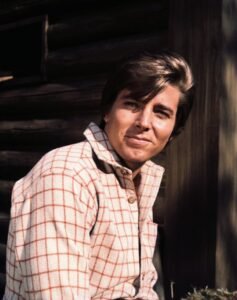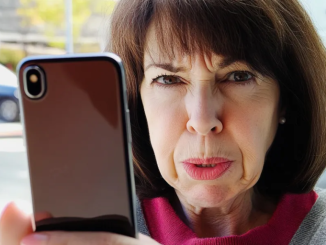Bobby Sherman was one of the biggest music stars during the 1960s and 1970s. Back then, it seemed like everyone had a crush on him.
He released several albums, became a well-known actor, performed for thousands of fans, and sold millions of records. But even with all his success, Sherman made the surprising decision to leave show business for good while he was still famous.
It wasn’t because he felt like he wasn’t talented anymore. Instead, he left for a bigger purpose—he wanted to save lives.
Here’s everything you need to know about the legendary Bobby Sherman!

Bobby Sherman was born on July 22, 1943, in Santa Monica, California, and grew up in Van Nuys, near Los Angeles.
**Bobby Sherman – Early Life**
By the time he was 11, Sherman had learned to play the trumpet and later mastered other instruments like the piano, trombone, and guitar. He attended Birmingham High School, where he joined a band and developed a strong interest in singing. Over the years, Sherman reportedly learned to play an impressive 16 instruments.
After graduating high school in 1961, he began studying at Pierce College in Woodland Hills, near Los Angeles. It was during this time that a relationship changed his life forever.
Sherman was studying child psychology at Pierce College when he met his first girlfriend. One night, she invited him to a cast party for *The Greatest Story Ever Told*.
By then, Sherman had already started performing music with different bands around the San Fernando Valley, and many people recognized his talent. At the party, Sherman didn’t hesitate to showcase his voice.
“I was always the guy who had the gumption to get up and sing in front of people,” he later said.

At the Hollywood party, Bobby Sherman had some friends playing in the band on stage, which made it easier for him to get up and sing. He performed Ray Charles’ “What I’d Say” in front of the crowd.
**Discovered at a Hollywood Party**
Since it was a Hollywood party, many famous people from the entertainment industry were there, including stars like Sal Mineo, Natalie Wood, and Jane Fonda.
After his performance, they recognized his talent. Sal Mineo, especially, took notice and decided to mentor him.
“People were saying things like, ‘Who’s handling you?’ I had no idea what that meant,” Sherman recalled.
“Well, I was just a kid from Van Nuys, and I was like, ‘What do they mean, handling me?’ Then I realized they were talking about representation.”
Sherman quickly got a taste of Hollywood life. Just three days later, an agent—who had heard about him from one of the party guests—sent him to an audition. It was for a new television show called *Shindig*, and Bobby landed a featured role.
His time on *Shindig* lasted only two years, but that was enough to get him noticed. By then, people across the country had fallen in love with him, and job offers started pouring in.

When *Shindig* was canceled in 1966, Bobby Sherman guest-starred on several other shows, including *The Monkees*, *Honey West*, and *The FBI*. He was starting to become a heartthrob in Hollywood, but it was in 1968 that he really made it big.
**Bobby Sherman – Music, Songs, Albums, Acting**
Sherman played the stuttering character Jason Bolt in *Here Come The Brides*, staying on the show for two full years. By the end of his time on the show, his character had lost his stutter, but the show was eventually canceled.
Jason Bolt became very popular with fans, and Sherman realized this during a telethon in Buffalo. Suddenly, he wasn’t just a rising star; he had become famous.
“The show had just started, and we didn’t even have any records out yet,” Sherman told *Tulsa World*.
“Greg Morris from *Mission: Impossible* and Robert Brown from *Here Come The Brides* and I were asked to do the telethon. It was going really well when the fire marshal came in and said, ‘We have a problem. You need to come up to the second floor; you have to greet some people.’
“They opened up a window, and I looked out to see the parking lot of the TV station filled with people. It was a sea of faces,” he recalled. “It was just unbelievable. That was when I realized something big was happening.”
The following year was a bit of a “limbo” for Bobby. However, it was during this time that he began focusing on writing songs and experimenting with his eight-track recording equipment.

Bobby Sherman became a professional singer, even though he hadn’t received much recognition for his voice yet.
**Bobby Sherman – Family, Wife, Children**
From 1969 to 1971, Sherman’s young fans bought millions of his recordings. He released popular singles like “Little Woman,” “Easy Come, Easy Go,” and “Julie, Do Ya Love Me.” He sold over a million copies of six different singles and four different albums.
“A song begins with an idea – one line,” he explained in 1971. “I build that into a complete lyric. Then, I fit the music around it.”
Sherman starred in a television series called *Getting Together*, a spinoff of *The Partridge Family*, about two songwriters, from 1970 to 1971. He also appeared in several guest roles after that.
At the same time as his rise to fame, he married his first wife, Patti Carnel, in 1971. Together, they had two sons, Christopher and Tyler.
Sherman wanted his kids to have a great place to grow up, so he decided to build a miniature model of Disneyland’s Main Street in his backyard. The project cost him about $15,000 and took around two and a half years to complete.

Not everyone was happy with Bobby Sherman’s Disneyland project; his wife was reportedly annoyed by the constant noise of hammers.
**”I Didn’t Know What Home Was”**
“At one point, she said, ‘If you don’t finish it, I’ll kill you,’” Sherman joked in an interview with *People*.
Bobby’s children not only inspired him to build his own piece of Disneyland but also became the motivation for his new career. He became a major teen heartthrob before stars like Shaun Cassidy and David Cassidy. Eventually, he was “replaced” by performers like Donny Osmond.
At the height of his career, Sherman starred in hit television series while also releasing popular singles, gaining adoration from millions of fans. His albums *Sixteen* and *Tiger Beat* became two of his most cherished works.
Even though he was living out his dream, Sherman explained that he often filmed five days a week and had evening shows on weekends. This busy schedule took a toll on him. “It was so hectic for three years that I didn’t know what home was,” he told the *Washington Post*.

“I was disoriented; I never knew where I was. I always had to be reminded. But, in all honesty, I must say I had the best of times because the concerts were great, and the fans were great. It was the proverbial love-in, but it just zapped so much out of me.”
**Bobby Sherman Left Music to Save Lives**
Then, in the middle of his celebrity status, Bobby suddenly decided to switch careers to a very important one. He chose to leave his music and television career to save lives.
Sherman was very involved in raising his children, and his then-wife Patti was afraid of blood. As anyone who has raised kids knows, accidents happen often, and Christopher and Tyler would sometimes fall and get hurt.
These falls sometimes caused bloody knees and other minor scrapes. Wanting to handle these situations better, Sherman decided to take some classes. He first took an introductory first aid and CPR class and later volunteered as an emergency medical technician.
“The very first call, I saved a little 5-year-old girl’s life. I thought, ‘Yeah, that’s the most incredible feeling,’” Bobby recalled in a 1994 interview.
My MIL Demanded to Share a Hotel Room with My Husband During Our Anniversary Trip

Our 10th wedding anniversary trip was supposed to be about reconnecting and romance. Instead, it turned into a bizarre nightmare when my mother-in-law decided she couldn’t let her “precious son” out of her sight. And that wasn’t even the worst part.
You see, Patrick’s mom has always had a knack for inserting herself where she doesn’t belong. But when she barged into our anniversary suite and claimed it for herself, I knew I couldn’t let this slide.
I just had to figure out how to make her pay for her antics without ruining my marriage.

A woman looking at her mother-in-law | Source: Midjourney
So, my husband and I recently celebrated our 10th wedding anniversary.
We planned a weeklong trip to a luxury resort, and it was our first real getaway since our son was born five years ago. The idea was simple. Unwind, reconnect, and maybe reignite a little romance. I’d been looking forward to it for months.
That is, until my mother-in-law, Victoria, inserted herself into our plans.

A woman standing in her house | Source: Midjourney
From the start, it was clear she saw herself as the third partner in our marriage.
At our wedding, she hijacked our first dance, taking Patrick’s hand before I had the chance. Since then, she’s made a habit of sidelining me at every opportunity. She made sure she was the center of attention on every occasion whether it was a birthday or a holiday.
When Patrick and I mentioned our anniversary trip, she immediately chimed in with her suggestion.
“Why don’t I come along?” she asked. “I could watch the little one while you two have some alone time.”

A woman talking to her daughter-in-law | Source: Midjourney
I resisted the urge to roll my eyes. Alone time? With her hovering? No thanks.
Patrick, ever the peacemaker, tried to frame it as a win-win.
“Think about it, Anna. She’ll take care of our son during the day, and we’ll still have the evenings to ourselves.”
Reluctantly, I agreed. “Fine. But she’s staying in her own room. I’m not sharing my suite.”
“Oh, of course!” she assured me, her smile a little too wide. “I wouldn’t dream of imposing.”

A woman in her son’s house | Source: Midjourney
Fast forward to the day we arrived at the resort.
As we checked in, Victoria eyed the staff with that judgmental air she always carried. Her nose wrinkled slightly when she saw her room key. It had the shower icon on it, while ours had the bath icon.
“What’s wrong?” Patrick asked.
She sighed dramatically.
“Oh, nothing…” she began. “It’s just that I really dislike showers. My bones need a good soak in a tub.”
My eyes narrowed.
The suite Patrick and I had booked, complete with a king-sized bed and a luxurious bathtub, was clearly the target of her complaint.

A ceramic bathtub | Source: Unsplash
I opened my mouth to protest, but before I could say anything, she marched toward the bellhop, snatched our suite key, and headed straight for the elevator.
“Mom, wait!” Patrick called, but she didn’t stop.
The poor bellhop barely had time to keep up with her as she barreled down the hallway.
We followed her to the suite, and by the time we arrived, she was already unpacking her things. She tossed her bag onto the bed, fluffed the pillows, and smiled at me like a cat that had just caught a mouse.

A woman standing in a hotel room | Source: Midjourney
“This will do nicely,” she announced. Then, turning to me, she added with a saccharine tone, “You can stay in the other room with the child, and I’ll stay here with my son.”
Wait, what? Did I hear that right?
I looked at Patrick, expecting him to say something. But he just stood there, awkwardly scratching the back of his neck. “Mom, come on…”
“Oh, don’t be difficult, dear,” she said, brushing him off. “We’re family. This is what families do.”

A woman smiling in a hotel room | Source: Midjourney
Her message was loud and clear. I was the outsider. The third wheel.
And the “I need a bath” excuse? It was just a smokescreen to take my anniversary suite right out from under me.
I stared at Patrick, waiting for him to tell his mom she was being completely out of line. I mean, who demands to share a hotel room with their grown son on his anniversary trip?
But instead of standing up to her, Patrick just shrugged.

A man standing near a window | Source: Midjourney
“It’s just for sleeping,” he mumbled. “We’ll still do the rest of the trip together. Let’s not make it a big deal.”
Not make it a big deal? I wanted to scream. But I plastered on my best fake smile instead.
“Of course. Whatever makes you comfortable,” I said sweetly, my voice dripping with sarcasm.
Victoria, oblivious to my tone, beamed. “I knew you’d understand, Anna. You’re such a good wife.”

A woman talking to her daughter-in-law in a hotel room | Source: Midjourney
Inside, I was fuming.
This was supposed to be our anniversary trip, a chance for us to reconnect after years of juggling work, parenthood, and everything in between. I wasn’t about to let her turn me into the third wheel on my own vacation.
If she wanted to act like the queen of the resort, fine. I had a plan brewing, and I knew she wouldn’t see it coming.
The next morning, I acted like I was completely fine with the new sleeping arrangements.

A young woman smiling | Source: Midjourney
Over breakfast, I smiled, nodded, and let Victoria ramble on about how “thoughtful” Patrick was for including her on the trip.
“I just love spending time with my son,” she said, patting his hand. “It’s so rare these days.”
Patrick gave me an apologetic glance, but I waved it off.
“No worries,” I said. “Actually, I’ve got a surprise for you both.”
Victoria’s eyes sparkled with curiosity. “A surprise?”

A woman sitting for breakfast in a hotel | Source: Midjourney
“Yep,” I nodded. “I’ve booked a romantic couples’ photoshoot at the resort this morning. I thought it would be a great way to capture some memories.”
Patrick frowned. “A couples’ photoshoot?”
“You’ll love it,” I said, keeping my expression innocent. “I talked to the resort staff last night, and they made all the arrangements. You and Mom are going to look great together.”
Victoria clapped her hands in delight. “Oh, how lovely! Patrick, isn’t this sweet of Anna?”

A woman smiling while talking to her son | Source: Midjourney
Patrick didn’t look convinced, but he didn’t protest. He was still in that awkward middle ground where he didn’t want to upset his mom or me. Poor guy had no idea what he was in for.
When they arrived at the photoshoot, the photographer greeted them with a big, cheerful smile. “Ah, here you are! We’re ready for your session.”
Patrick’s eyes widened. “Wait, no—”
“Oh, don’t be modest!” the photographer interrupted. “You two look like such a lovely couple.”

A person holding a camera | Source: Unsplash
I watched from a distance as the photographer posed them by the fountain, gushing over their “chemistry” and “love story.” Patrick looked like he wanted the ground to swallow him whole, while Victoria basked in the attention.
I could barely hold back my laughter. This was just the beginning.
The next morning, Patrick and Victoria headed to what they thought would be a casual resort activity. Little did they know, I’d signed them up for an exclusive couples’ tango class.

A woman smiling | Source: Midjourney
The instructor, Marco, greeted them with dramatic flair. “Welcome to the dance of love!”
“Wait, what?” Patrick asked as his eyes widened in horror.
Victoria clasped her hands in delight. “Oh, Patrick, this is so nice! I’ve always wanted to learn tango.”
I lounged nearby, pretending not to notice as Patrick gave me a desperate look. I just sipped my coffee and waved.

A woman holding a cup of coffee | Source: Pexels
“Now,” Marco began, “tango is about connection! Mr. Patrick, place your hand on your wife’s waist and gaze into her eyes. The soul must speak through the dance.”
Patrick looked ready to bolt. “She’s not my—”
“No excuses! Dance is truth!” Marco declared, clapping his hands.
Victoria leaned in, practically giddy. “Come on, Patrick. Let’s show them what we’ve got!”
Reluctantly, Patrick placed his hand on her waist and shuffled through the steps as Marco barked instructions. Every few seconds, Patrick tripped or stepped on Victoria’s foot.
I couldn’t hold back my laughter as I watched his misery unfold.

A close-up shot of a woman’s face | Source: Unsplash
“More passion!” Marco exclaimed. “The woman must feel the fire in her partner’s gaze!”
I saw Patrick muttered something under his breath that I’m sure wasn’t appropriate.
By the end of the class, Victoria was beaming.
“That was wonderful!” she exclaimed. “We should take dance lessons back home.”
Patrick groaned. “I think I’ve had enough tango for a lifetime.”
But the day wasn’t over yet.
That evening, I sent them off to the resort’s signature sunset dinner cruise. The staff pulled out all the stops, complete with a violinist, rose petals, and a candlelit table on the deck.

A close-up shot of cutlery on a table | Source: Unsplash
As they boarded, the captain greeted them warmly. “Welcome aboard! We’ve prepared the most romantic table for you two lovebirds.”
Patrick looked like he wanted to jump overboard. “Uh, we’re not—”
Victoria waved regally, basking in the attention. “Thank you! This is simply delightful.”
I waved at them from the dock.
“Bon voyage!” I called out with a grin.
Patrick’s face turned beet red. He glanced back at me, clearly catching on that I was behind all of this.
The cruise lasted two hours, and by the time they returned, Patrick was done.

A man standing in a hotel lobby | Source: Midjourney
He marched over to me the second Victoria disappeared into her room.
“What the hell is going on?” he hissed, his face red with embarrassment. “Why does everyone think we’re a couple?”
I blinked innocently. “Oh, I have no idea. I guess the staff must’ve misunderstood when I said it was our anniversary trip. I just wanted to make sure your mom had a good time, since she insisted on coming.”
He ran a hand through his hair, exhaling sharply. “Anna… I messed up, didn’t I?”
I crossed my arms, raising an eyebrow. “You think?”

A woman talking to her husband | Source: Midjourney
“I should’ve told her no,” he admitted, shaking his head. “I thought it would be easier to let her come along. I didn’t realize how ridiculous it would get.”
“Well,” I said, taking a sip of my champagne, “now you know.”
The next morning, as we packed to leave, Patrick was tripping over himself to apologize. “I’ll never let her interfere like this again. Next time, we’re hiring a nanny.”
“Sounds perfect,” I replied with a satisfied smile.

A woman smiling while looking straight ahead | Source: Midjourney
Victoria, oblivious to the chaos she’d caused, declared it the best vacation ever.
So, what did I learn from this? It’s that sometimes, you don’t need to raise your voice to make a point. You just need a little creativity to teach a lesson that won’t be forgotten.
Do you agree?
This work is inspired by real events and people, but it has been fictionalized for creative purposes. Names, characters, and details have been changed to protect privacy and enhance the narrative. Any resemblance to actual persons, living or dead, or actual events is purely coincidental and not intended by the author.
The author and publisher make no claims to the accuracy of events or the portrayal of characters and are not liable for any misinterpretation. This story is provided “as is,” and any opinions expressed are those of the characters and do not reflect the views of the author or publisher.



Leave a Reply